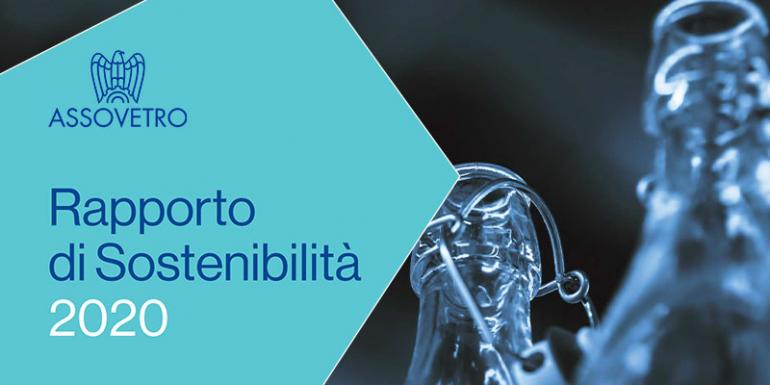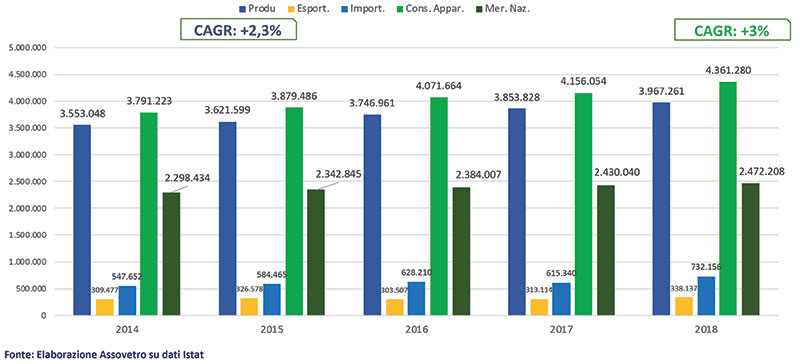The Assovetro Sustainability Report

Declaration of the Italian glass industry in the light of transparency and sustainability. Between 2016 and 2018, production increased by 8.2%, investments in technologies and innovation marked a +44.2%, the use of renewable energies reached 26.2%. A summary.
The first Sustainability Report by Assovetro (National Association of Glass Manufacturers under Confindustria) issued by Ergo, spin-off of the Sant’Anna University of Pisa, presents an accurate picture of the performance of the Italian glass industry from a social, economic and environmental point of view: Eighteen the companies involved (15 hollow glass producers and 3 flat glass producers which together represent 90% of the installed industrial potential in Italy).
In the 2016-2018 three-year period, glass production grew by 8.2%, while turnover, made essentially in Italy, increased by 6%. Investments in technology and innovation are up +44.2% (33 million solely for environment and safety).
The performance of the circular economy is considerable, starting from the reduction of waste production and water consumption (thanks to the adoption of closed cycle systems to reduce losses and the reuse of cooling and cleaning water; the use of recycled water is higher than 44% of total water consumption).
According to the surveys, CO2 emissions and energy consumption are stable, despite the increase in production, where the greater use of renewable sources also stands out (26.20% in 2018).
In 2018 the market placement of glass packaging grew by 1.7%, collection by 8.4%, while the quantity of recycled glass packaging waste is +6.6% compared to the previous year. The recycling rate of packaging glass is 76.3%, far exceeding what is required by Italian (66%) and European (75% by 2030) regulations.
The breakdown of glass production of the companies subject to the survey sees the largest share, over 50% earmarked for making food containers, 16% for producing glass for the building and automotive sectors, 9.7% used for lights and lamps, while the remaining 7.6% is at the service of the wool and yarn market or other processes and uses involving glass.





















